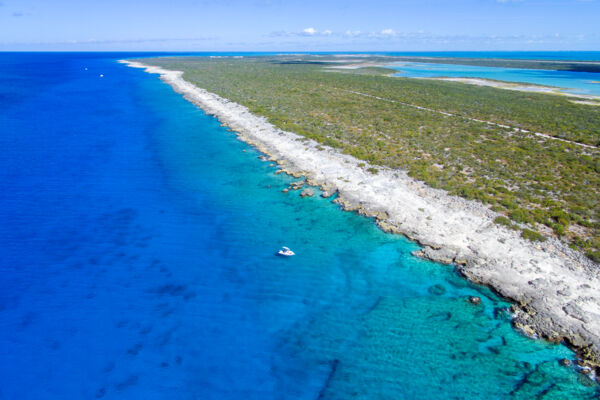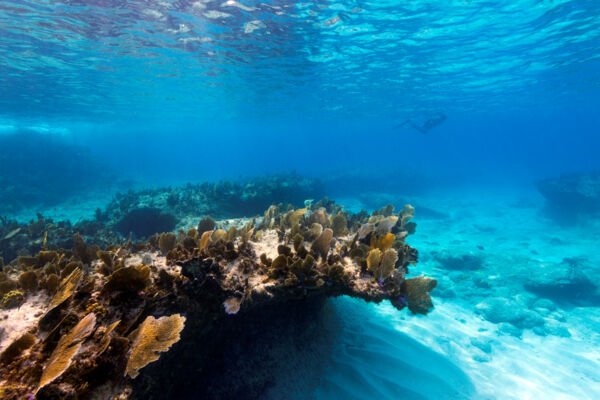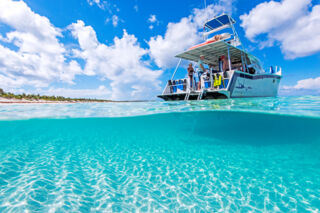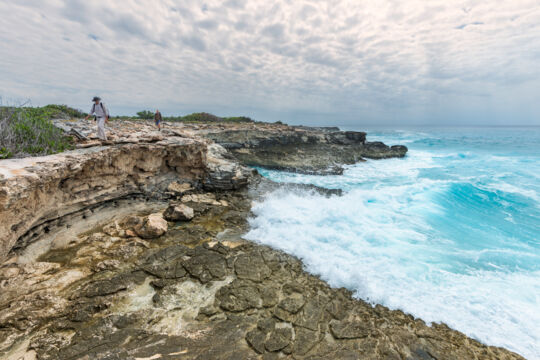West Caicos Marine National Park West Caicos

The West Caicos Marine National Park is a 981-acre (397 hectare) protected area off the west coast of West Caicos, and includes much of the ocean fronting the west side of the island. This national park is home to several of the country’s top dive sites, excellent snorkeling, and interesting geology.
The Wall and Diving
The Turks and Caicos Islands are situated on shallow submerged plateaus, and the edges of these plateaus or walls—as they are commonly referred to—typically feature sheer and abrupt depth changes from 30–60 feet (9–18 m) at the top of the wall to great depths below.
Over a dozen popular dive sites are found in the West Caicos Marine National Park, including many of the sheerest wall dive sites in the Turks and Caicos. The drop-off at these sites is quite impressive, with 45-foot (14 m) depths falling away into the thousands. Scuba diving companies on Providenciales and the country's liveaboards, such as the Turks and Caicos Aggressor II, frequently organize dive trips to this park.
Cliffs and Coastal Snorkeling

The west coast of West Caicos experiences some of the clearest ocean water in the Turks and Caicos, and the coastal snorkeling is unmatched. The setting is unique—low limestone cliffs interspersed by small coves. The ocean floor of the coves is typically sandy, and beautiful patterns are created by the wave action. Several of the small coves offer interesting little caves, which are quite fun to snorkel in.
Elkhorn coral, purple and yellow sea fans, and colorful reef fish thrive along the coast, and due to the adjacent deeper water, it’s possible to see stingrays, eagle rays, nurse sharks, and turtles gliding by as well.
In addition, there's also excellent cliff jumping. You’ll be able to find spots with heights ranging up to about 25 feet (8 m).
Sights and Attractions on Land

Although not part of the marine national park, the abandoned ruins of the Victorian-era Yankee Town can be seen close to the coast. This site was the center of the short-lived sisal industry on West Caicos, and buildings, a steam traction engine, and primitive kerosene engines still stand the test of time and are hidden in the vegetation.
The nature reserve of Lake Catherine is adjacent to Yankee Town, and a man-made small-scale railroad causeway still divides this marine pond. Similar to the guano and sisal rail system on East Caicos, this transport infrastructure utilized rail carts pulled by donkeys, and transported the sisal crop from the fields to Yankee Town for processing, bailing, and export.
Today, Lake Catherine supports a wonderful diversity of wading birds, including flamingos, reddish egrets, great blue herons, and pelicans.
The limestone coastal cliffs fronting the West Caicos Marine National Park hides amazing fossilized marine life, and ancient corals and shells can be seen in the limestone bedding.
Tour Companies








